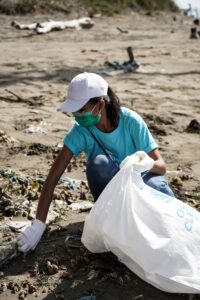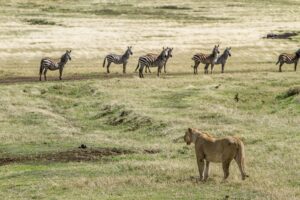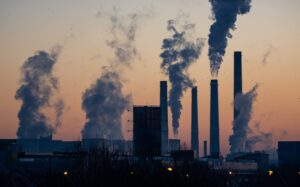A big threat

Extinction is one of the main concerns of environmentalists and ecologists and it should be a concern to everyone too. It is estimated that about five billion species of plants and animals that lived on Earth have died out. In 2019 alone, one million species of plants and animals were at risk of extinction. At least 571 species have been lost since 1750. Scientists at the U.N Convention on Biological Diversity concluded that 150 species are lost every day. Currently, the rate of extinction is between 100 and 100,000 species per year. Scientists believe we are in the middle of the sixth mass extinction known as the Holocene Extinction. Mass extinctions (though they are rare) have occurred five times in history. The most recent and common is the Cretaceous-Paleogene Extinction which happened about 65 million years ago which wiped out the dinosaurs. They were caused by natural events such as comets and volcanic eruptions. Unfortunately, humans are the cause of the sixth mass extinction. Isolated extinctions are more common and happen over a period of years.
Causes of Extinction
Human interaction is one of the major causes of extinction. In one way or the other, our actions affect the environment both positively and negatively. While activities such as Agriculture, Mining and Urbanization are beneficial to humans, it does not bode well for the environment especially when not done with caution and care. These are some of the other cause of extinction:



- Introduction of Species: When a new species is introduced to a new habitat, they can become invasive and take over the ecosystem, preying on the native species and bringing diseases. Some of these species are brought over by humans when they move from one place to another. An example of this is the Brown Tree Snake. These animals left their native Australia on ships and planes (usually without the knowledge of the humans on board) to Pacific Islands such as Guam. Without local island predators, the snakes multiplied quickly and have already caused the extinction of birds and mammals in their new habitat.
- Pollution and Climate Change: Chemicals such as carbon monoxide, nitrogen oxides, mercury, cadmium and lead contaminate our air, oceans and soil which in turn interfere with the metabolism of animals. Sewage and run-off from industrial plants can poison the water and affect the species living in the water. Burning of fossil fuel raises the temperature of the Earth’s air and ocean. It also raises sea levels. These changes threaten the survival of many species.
- Loss of Habitat and Human Overpopulation: As the number of humans increases, the need to sustain them increases. As a result more forests are destroyed for Agriculture, trees are cut down for wood, paper etc. These activities destroy the habitat of species such as Mountain Gorillas who have to relocate and are unable to handle the stress.
- Hunting and Overharvesting: A lot of species have been hunted to extinction or to the point where they were critically endangered. Aside from being hunted for food, they are also hunted for their furs, skin, feathers and horns. For instance, Elephants and Rhinos were hunted heavily in Africa for ivory and horns. The population of these animals has gone down from millions to hundreds of thousands and today they are protected. Another example is the Tiger which was hunted to near extinction in Asia for their furs as well as their bones which were used for medicine. We overharvest species such as Whales, Sharks and the Bluefin Tuna and these species are unable to reproduce fast enough to meet our needs.
Every species has its importance in preserving the biodiversity of our planet. The elimination of a species affects the food chain of our ecosystem. The extinction of large predators and pollinators disrupt the Earth’s ecosystem balance
- In Africa, lions and leopards are lost to poachers and this has caused an increase in the number of olive baboons, who transfer intestinal parasites to humans living nearby.
- In the oceans, industrial whaling has caused a change in the diet of killer whales making them eat more sea lions, seals and otters leading to a population decrease of those species.
When pollinators go extinct, plants that depend on them are left without a convenient means to spread their seeds.
We can take steps to protect our biodiversity and stop the extinction of more species.
- Reduce, Reuse and Recycle. Recycling reduces the amount of raw materials we take from the earth.
- Leave less ecological footprints.
- Avoid using products made from animal furs, skin especially those from an endangered species.
- More wildlife conservation and anti-deforestation laws should be made to protect animals and our forests.
Efforts are currently being made by scientists to de-extinct some animals using genetic engineering and cloning. The proposed targets are the woolly mammoth, the passenger pigeon and the Pyrenean ibex. Although attempts have been made, none has been successful thus far but the research is still ongoing.





